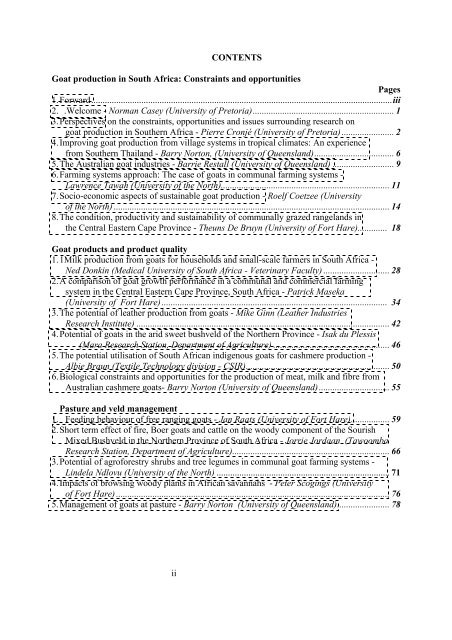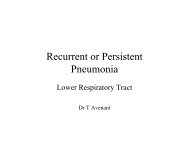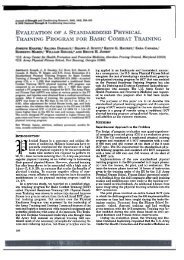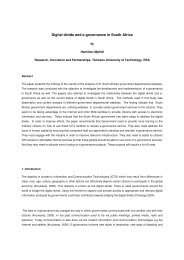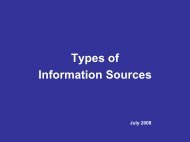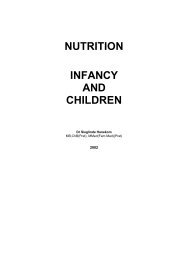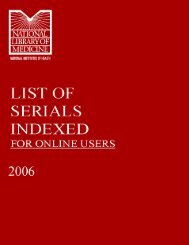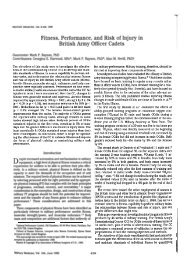Research and Training Strategies for Goat Production Systems in ...
Research and Training Strategies for Goat Production Systems in ...
Research and Training Strategies for Goat Production Systems in ...
Create successful ePaper yourself
Turn your PDF publications into a flip-book with our unique Google optimized e-Paper software.
CONTENTS<br />
<strong>Goat</strong> production <strong>in</strong> South Africa: Constra<strong>in</strong>ts <strong>and</strong> opportunities<br />
Pages<br />
1. Forward....................................................................................................................................iii<br />
2. .Welcome - Norman Casey (University of Pretoria).............................................................. 1<br />
3. Perspectives on the constra<strong>in</strong>ts, opportunities <strong>and</strong> issues surround<strong>in</strong>g research on<br />
goat production <strong>in</strong> Southern Africa - Pierre Cronjé (University of Pretoria) ....................... 2<br />
4. Improv<strong>in</strong>g goat production from village systems <strong>in</strong> tropical climates: An experience<br />
from Southern Thail<strong>and</strong> - Barry Norton, (University of Queensl<strong>and</strong>)................................... 6<br />
5. The Australian goat <strong>in</strong>dustries - Barrie Restall (University of Queensl<strong>and</strong>) ........................... 9<br />
6. Farm<strong>in</strong>g systems approach: The case of goats <strong>in</strong> communal farm<strong>in</strong>g systems -<br />
Lawrence Tawah (University of the North).......................................................................... 11<br />
7. Socio-economic aspects of susta<strong>in</strong>able goat production - Roelf Coetzee (University<br />
of the North) ......................................................................................................................... 14<br />
8. The condition, productivity <strong>and</strong> susta<strong>in</strong>ability of communally grazed rangel<strong>and</strong>s <strong>in</strong><br />
the Central Eastern Cape Prov<strong>in</strong>ce - Theuns De Bruyn (University of Fort Hare)............. 18<br />
<strong>Goat</strong> products <strong>and</strong> product quality<br />
1. 1Milk production from goats <strong>for</strong> households <strong>and</strong> small-scale farmers <strong>in</strong> South Africa -<br />
Ned Donk<strong>in</strong> (Medical University of South Africa - Veter<strong>in</strong>ary Faculty) ............................. 28<br />
2. A comparison of goat growth per<strong>for</strong>mance <strong>in</strong> a communal <strong>and</strong> commercial farm<strong>in</strong>g<br />
system <strong>in</strong> the Central Eastern Cape Prov<strong>in</strong>ce, South Africa - Patrick Maseka<br />
(University of Fort Hare) ................................................................................................... 34<br />
3. The potential of leather production from goats - Mike G<strong>in</strong>n (Leather Industries<br />
<strong>Research</strong> Institute) ............................................................................................................... 42<br />
4. Potential of goats <strong>in</strong> the arid sweet bushveld of the Northern Prov<strong>in</strong>ce - Isak du Plessis<br />
(Mara <strong>Research</strong> Station, Department of Agriculture) ................................................... 46<br />
5. The potential utilisation of South African <strong>in</strong>digenous goats <strong>for</strong> cashmere production -<br />
Albie Braun (Textile Technology division - CSIR)............................................................... 50<br />
6. Biological constra<strong>in</strong>ts <strong>and</strong> opportunities <strong>for</strong> the production of meat, milk <strong>and</strong> fibre from<br />
Australian cashmere goats- Barry Norton (University of Queensl<strong>and</strong>)............................... 55<br />
Pasture <strong>and</strong> veld management<br />
1. Feed<strong>in</strong>g behaviour of free rang<strong>in</strong>g goats - Jan Raats (University of Fort Hare)................. 59<br />
2. Short term effect of fire, Boer goats <strong>and</strong> cattle on the woody component of the Sourish<br />
Mixed Bushveld <strong>in</strong> the Northern Prov<strong>in</strong>ce of South Africa - Jorrie Jordaan (Tawoomba<br />
<strong>Research</strong> Station, Department of Agriculture)..................................................................... 66<br />
3. Potential of agro<strong>for</strong>estry shrubs <strong>and</strong> tree legumes <strong>in</strong> communal goat farm<strong>in</strong>g systems -<br />
L<strong>in</strong>dela Ndlovu (University of the North) ............................................................................ 71<br />
4. Impacts of brows<strong>in</strong>g woody plants <strong>in</strong> African savannahs - Peter Scog<strong>in</strong>gs (University<br />
of Fort Hare) ........................................................................................................................ 76<br />
5. Management of goats at pasture - Barry Norton (University of Queensl<strong>and</strong>)....................... 78<br />
ii


